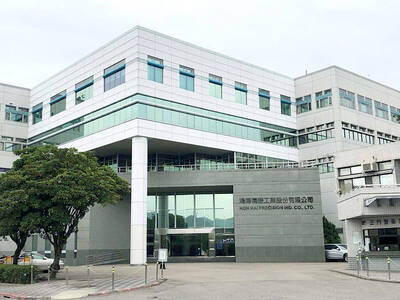TransAsia Airways Corp (TNA, 復興航空) announced yesterday that it would offer NT$14.9 million (US$496,200) each in compensation to the families of 48 passengers and crew who died in the crash of TransAsia Flight GE222 to Penghu last month.
The amount surpasses the highest compensation paid by a Taiwanese airline of NT$14.2 million per victim, which was paid by China Airlines Ltd (中華航空) to the families of the 225 people who died in the Flight CI611 crash of 2002.
Before the final conclusion of investigations into the cause of the crash are made public, TNA reached the decision at a meeting yesterday with families of the victims of the disaster.

Photo courtesy of TransAsia Airways Corp
“As an expression of the company’s highest sincerity, the company decided on the compensation payment by taking into consideration related regulations and precedents internationally and domestically,” the carrier said in a statement.
The Aviation Safety Council, which is leading the investigation into the crash, said it would accelerate the pace of the investigation to make it clear what was responsible for the disaster as soon as possible.
The NT$14.9 million per victim includes an out-of-court settlement of NT$13.5 million, as well as a preliminary pension of NT$200,000 and a funeral subsidy of NT$1.2 million the carrier has already paid.
Families of the people killed have not accepted the offer yet. However, if they decide to do so, TNA losses as a result of the crash would amount to NT$715.2 million. The company has also met the medical expenses and offered other compensation to 10 injured passengers and five Penghu residents.
Part of the compensation for the casualties is set to be covered by aviation insurance, with the amount remaining undecided. TNA did not specify if the compensation payment would impact the company’s business and profitability in the future.
TNA officials are to hold talks with each of the families of the victims to finalize the amount of compensation.
The carrier has posted the highest earnings per share (EPS) for the year among the nation’s three listed airlines on the back of lower operating costs and its expansion of international routes over the past year.
TNA, which operates mainly regional and cross-strait routes, earned NT$158.31 million, or NT$0.29 per share, for the first six months of this year, compared with net losses of NT$186.3 million, or NT$0.34 per share, during the same period last year, the company said in a statement.

Shares in Taiwan closed at a new high yesterday, the first trading day of the new year, as contract chipmaker Taiwan Semiconductor Manufacturing Co (TSMC, 台積電) continued to break records amid an artificial intelligence (AI) boom, dealers said. The TAIEX closed up 386.21 points, or 1.33 percent, at 29,349.81, with turnover totaling NT$648.844 billion (US$20.65 billion). “Judging from a stronger Taiwan dollar against the US dollar, I think foreign institutional investors returned from the holidays and brought funds into the local market,” Concord Securities Co (康和證券) analyst Kerry Huang (黃志祺) said. “Foreign investors just rebuilt their positions with TSMC as their top target,

REVENUE PERFORMANCE: Cloud and network products, and electronic components saw strong increases, while smart consumer electronics and computing products fell Hon Hai Precision Industry Co (鴻海精密) yesterday posted 26.51 percent quarterly growth in revenue for last quarter to NT$2.6 trillion (US$82.44 billion), the strongest on record for the period and above expectations, but the company forecast a slight revenue dip this quarter due to seasonal factors. On an annual basis, revenue last quarter grew 22.07 percent, the company said. Analysts on average estimated about NT$2.4 trillion increase. Hon Hai, which assembles servers for Nvidia Corp and iPhones for Apple Inc, is expanding its capacity in the US, adding artificial intelligence (AI) server production in Wisconsin and Texas, where it operates established campuses. This

Nvidia Corp chief executive officer Jensen Huang (黃仁勳) on Monday introduced the company’s latest supercomputer platform, featuring six new chips made by Taiwan Semiconductor Manufacturing Co (TSMC, 台積電), saying that it is now “in full production.” “If Vera Rubin is going to be in time for this year, it must be in production by now, and so, today I can tell you that Vera Rubin is in full production,” Huang said during his keynote speech at CES in Las Vegas. The rollout of six concurrent chips for Vera Rubin — the company’s next-generation artificial intelligence (AI) computing platform — marks a strategic

US President Donald Trump on Friday blocked US photonics firm HieFo Corp’s US$3 million acquisition of assets in New Jersey-based aerospace and defense specialist Emcore Corp, citing national security and China-related concerns. In an order released by the White House, Trump said HieFo was “controlled by a citizen of the People’s Republic of China” and that its 2024 acquisition of Emcore’s businesses led the US president to believe that it might “take action that threatens to impair the national security of the United States.” The order did not name the person or detail Trump’s concerns. “The Transaction is hereby prohibited,”